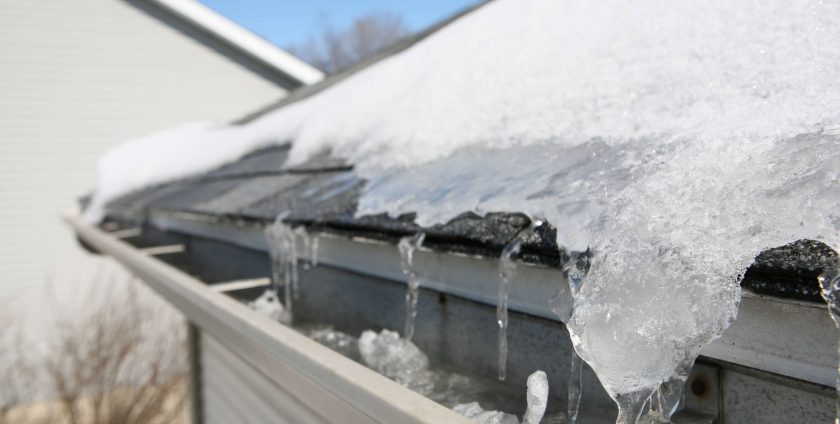
Roofs are one of the strongest components of your home and help keep your house toasty in the dead of winter. A poorly maintained roof will not do its full duties during winter and could leave you with a mess or leak on your hands. Here are some tips from Grissom Contracting on what to be on the lookout for during winter to tackle any roofing issues that may cause more harm than good.
Be On the Lookout for These Roof Issues During Winter
You don’t have to worry about these winter roof nightmares if you follow these three steps:
Frosted, or Not to Be Frosted?
Sometimes when one thing is not like the others it’s a good thing but not when it comes to roofs. If you notice that all the neighbors’ roofs are frosted, but yours is not (and everyone is receiving the same sunlight) it doesn’t mean that your roof is fending off the frost – it means you’re poorly ventilated.
Those roofs are frosted because their well-ventilated attics are warm and frost forms when the cold moisture of the outside air condenses and freezes on the warm roofs. An unfrosted roof is a poorly ventilated cold roof that’s making your furnace work overtime. If your neighbors are frosted and you aren’t, it’s time to call a roofer to check your ventilation before your utility bills skyrocket.
Those Darn Ice Dams
Ice dams are bad news for a roof, but they can be prevented. Like the frosted roof ice dams are contributed to poor ventilation and can also be caused by clogged or improperly sloped gutters. Ice dams form when melting snow or precipitation freezes before it can drain off the roof forming a large ball of ice that can penetrate shingles, pry gutters, and cause leaks.
The best medicine for ice dams is again proper ventilation and freely flowing gutters. If you live in a particularly cold or icy climate, you should consider heat tape or heat cable to prevent damaging ice dams further.
Inspect Your Roof Before Winter
Always inspect your roof before winter makes it unsafe or unworkable. Perform a thorough roof inspection including checking the shingles, flashing, gutter, and any other components of your unique roof including the attic for leaks. Avoid winter damage by having anything corrected before the cold rolls in.
By checking to see if your roof matches your neighbors, taking care of ice dams, and inspecting your roof before winter you’ll be assured your roof will stand up to whatever Jack Frost throws at it. Follow these tips, keep the cold out, and sip some cocoa.


